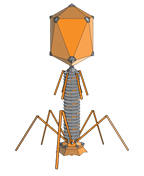
In re Droge (Fed. Cir. 2012)
In a unanimous panel opinion, the Federal Circuit has affirmed a decision by the Board of Patent Appeals and Interferences (now Patent Trials and Appeals Board) that Droge’s claims are unpatentable as obvious when compared against the known prior art. In this case, it was the inventors’ own previously published academic article that ended the case.
Droge’ claimed invention covers a phage-mediated recombinant DNA method for use in eukaryotic cells and the inventor’s prior paper involved a similar technique in prokaryotic cells. Droge presented a credible argument that differences in the cell types and protein co-factors meant that someone skilled in the art would not expect the prokaryotic technique to work in eukaryotic cells.
On appeal, the Federal Circuit found two problems with Droge’s arguments: (1) the prior art does not need to create a true expectation that the new invention will work – rather, the question is whether it creates a “reasonable expectation of success.” For that point, court quoted the 2009 Kubin decision: “Obviousness does not require absolutely predictability of success … all that is required is a reasonable expectation of success.” In re Kubin, 561 F.3d 1351, 1360 (Fed. Cir. 2009)). (2) Because the expectation of success is a factual question, the Board’s decision will only be overturned if that decision is unreasonable and lacks substantial evidence. That low evidentiary standard means that the Board’s decisions are affirmed unless clearly wrong.
After rejecting Droge’s arguments, the Federal Circuit then affirmed the rejection – finding the claims unpatentable.
Interesting – Dr. Peter Droge appears to be the owner of the patent application – having received an assignment from the other two inventors in 2002. The trio are also the listed inventors of U.S. Patent No. 7,491,539 that – according to the spotty USPTO assignment records – is co-owned by Dr. Droge and Boehringer Ingelheim.
Tch, tch. There is something intellectually dishonest here. Dr. Droge is a leader in a difficult field that 99.9% of us could not do a single simple thing in. In his earlier article that was cited against him, he took us farther into the unknown than anyone had gone before. From there neither he nor anyone else knew where to go next. Then he tried something new, that worked and was especially useful and needed, and had commercial potential, so he goes thru the time, trouble and expense of a patent ap to claim it. NOW the PTO says it was obvious all along. Shame. Tell me, please, PTO and naysayers, what is obvious next now that we are here? This is not the end of the road or the edge of the flat earth. Dr. Droge, thank-you and please keep going anyway.
No. Substantial evidence is an easier standard to meet – it’s the one used to review jury verdicts, for example. Substantial evidence means that there’s enough for a reasonable fact-finder to find that way. Clearly erroneous means that even if there is enough to reasonably support the fact-finding, that the court is left with a clear conviction that it is wrong when examining the evidence on the whole.
With that being said, in practice, I’m not sure that the two standards of review have any huge difference except in some rare cases.
” Because the expectation of success is a factual question, the Board’s decision will only be overturned if that decision is unreasonable and lacks substantial evidence. That low evidentiary standard means that the Board’s decisions are affirmed unless clearly wrong.”
Wouldn’t that be a clear error standard? A reversal under the substantial evidence standard means that no reasonable person could have decided what was decided.
” That low evidentiary standard means that the Board’s decisions are affirmed unless clearly wrong. ”
You know how we do.
Comments are closed.